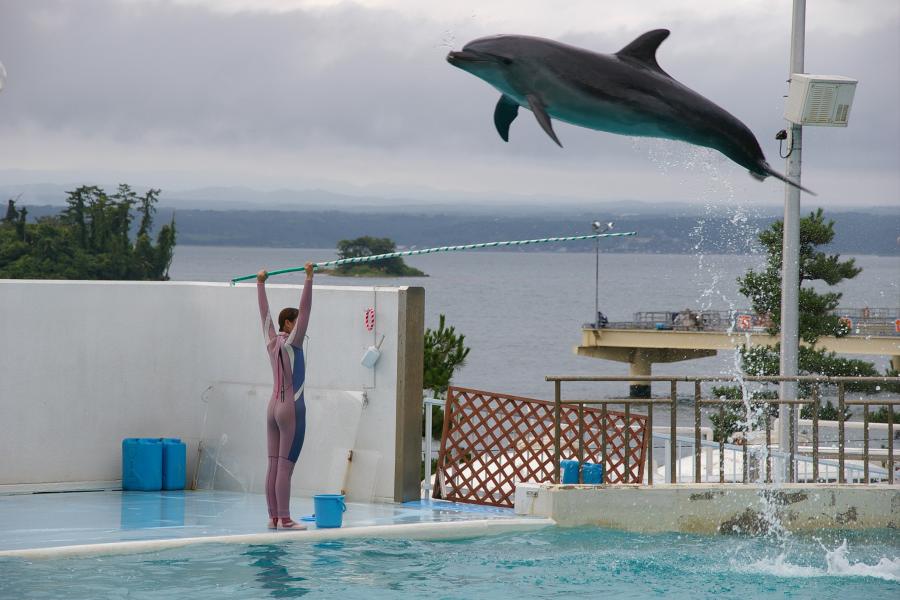Dolphin, 2006, pelican

Species: Bottlenose dolphin, Tursiops truncatus
Location and habitat: Global oceans
Conservation Status: LeastConcerned (IUCN Red List)
Creator: pelican
Date: 2006
Medium: Photography.
Copyright: Creative Commons
Dolphins occupy a peculiar relationship with humans, one characterised by the phrase 'so near yet so far'. People can recognise something of themselves in these famously intelligent and social animals. As is well known, dolphins have advanced cognitive functions, including in concept formation, symbol recognition, comprehension of numerical values among many others. They live in complex social groups, woven with intergenerational kinship relationships and they mate for the sheer pleasure of it. They have been seen exhibiting altruistic behaviour to members of other species, suggesting a sense of care and or perhaps responsibility, that can go across species divides.
Yet, these oceanic mammals live in very different phemonological world's from us apes. Humans can hear sounds between 20 and 20,000 hertz (Hz) dogs can hear up to 44Hz. Bottlenose dolphins can hear up to 160,000 Hz. They use this incredibly sensitive hearing to 'see' and 'feel' with sound, using echolocation to map out their marine environments and to locate fish. From listening back to a clicking sound they issue, dolphins can recognise the exact size and distance of a fish based on the sound bouncing back from its swim bladder, with this ability suggesting that they create a kind of 'sonic picture' in their minds. They communicate with one another via burst of pulsed sounds and various whistle-ly pitch bends, as well as body language. Lacking vocal chords, dolphins produce sound in a series of specialised air sacks near their blowhole, and listen largely through their lower jaw. Each dolphin has an individualised frequency-modulated narrow-band signature vocaliztion, a unique sound.
Bottlenose dolphins are not endangered, with some marine biologists believing that their future is likely stable because of their abundance, intelligence and adaptability. Cascading and converging ecological crises may well test this though. Today there are around 3,000 dolphins, including about 1,000 bottlenoses, living out their long lives in captivity. In sharp contrast to the vast and ever-shifting seascape, captive dolphins are effectively held in sensory deprivation tanks. The dolphin pictured above is being made to perform for a crowd at is Notojima Aquarium, Ishikawa, Japan. The leaping dolphin would have switched to its secondary pupils, one specialised to vision above water, would have a clear view -- and intellectual recognition of -- the ocean just beyond its tank.
Quotes
No quotes found.
Login to add a quote


